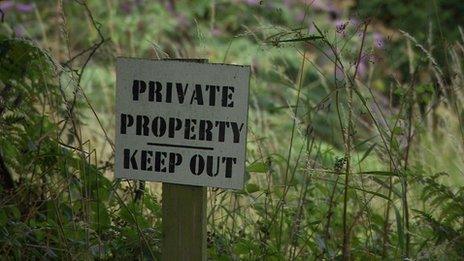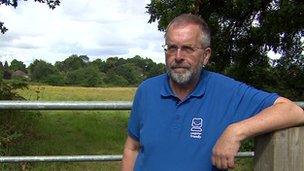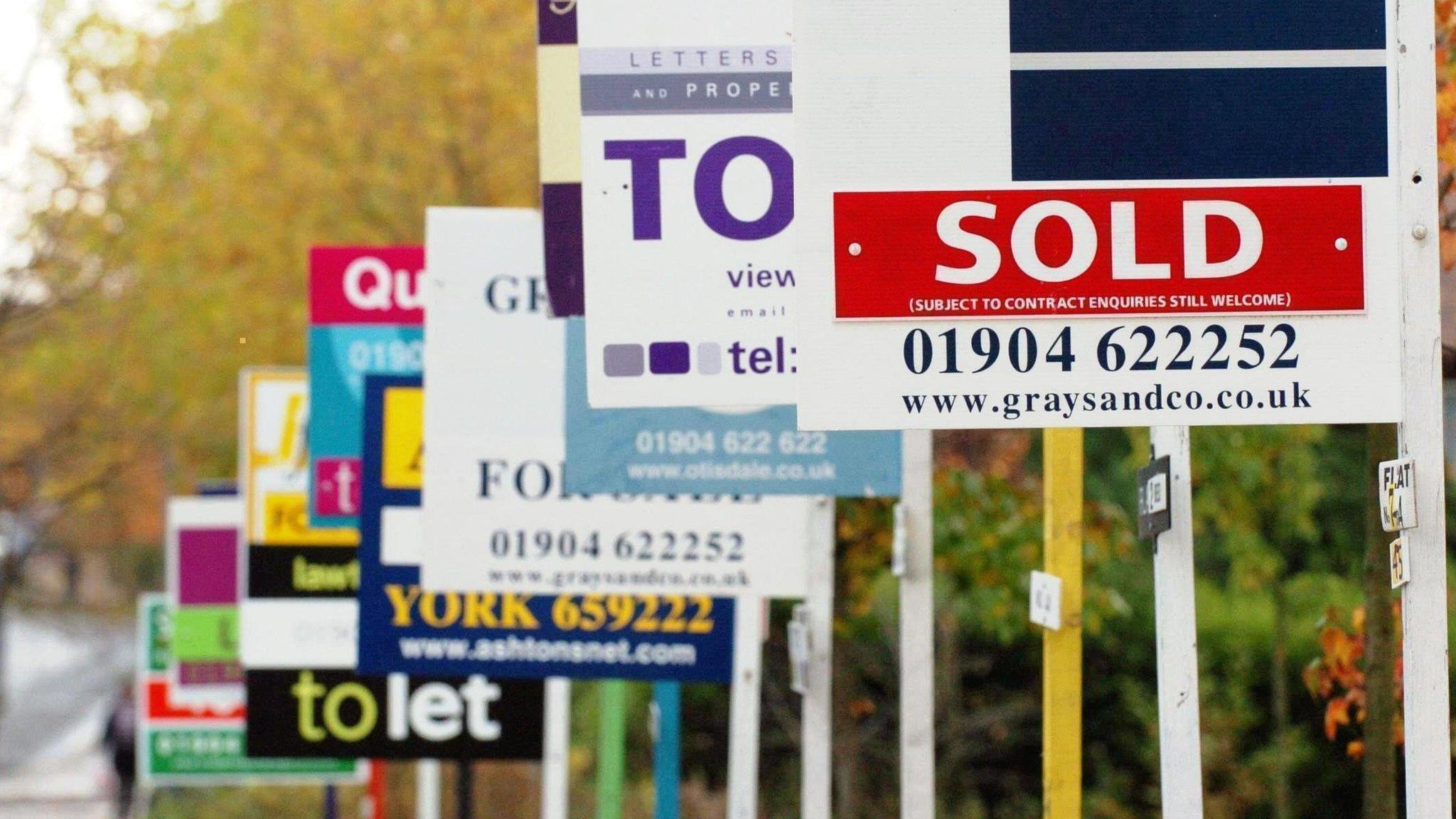A new frontier in the battle for the green belt
- Published

"Private Property - Keep Out" reads the sign above the gate. And while the flowers in the meadow might lull you into thinking you're in the countryside, a steady stream of traffic along the narrow lane reminds you that this is a prime location in the heart of suburbia.
This field on the north edge of St Albans, Hertfordshire is also the frontline in a battle between developers and conservationists over how and where new homes will be built in the overcrowded South East of England.
There's no shortage of demand for houses here. It's 20 minutes by train to London, and the average house costs more than £460,000, up more than 10% over the past year.
A local developer, Hunston Properties, has submitted plans to build 84 homes, ranging from four-bedroom houses to one-bedroom flats. The local council has refused it, on the basis that this is green-belt land, protected from development under rules designed to restrict urban sprawl.
Regime change
"What we want to do is maintain this historic aspect of St Albans," says local campaigner Melvyn Teare, on why many local residents oppose the development.

Melvyn Teare is campaigning against Hunston Properties' development proposals
"That's one of the reasons why people are attracted to come and live here. And if we start to meld with Watford and Hatfield and Radlett and the like, we start to lose the historic significance of what St Albans is about."
The council argues that it is meeting its requirement to build 360 homes in the area per year. In a statement, it said: "The council is committed to maintaining this quality environment in line with long-standing national and local policies that give priority to the retention of open land."
But Hunston Properties argues that the council should be building nearly twice the current number of homes - 688, and the only way to achieve this is to build on the green belt.
It says that the council's figure is based on the old planning regime left in place by the old Labour government. It considered the need for new homes on a regional basis, hence its name, the Regional Spatial Strategy.
Under this regime, if an area like St Albans couldn't find room for all the houses it needs, it could take into account the fact that other authorities were building more than their allocation, as long as the region as a whole hit its target.
But the Regional Spatial Strategy was axed in January, after another lengthy court battle. Its replacement, the National Planning Policy Framework, obliges every area to build enough houses to meet its "objectively assessed need".
'Wake-up call'
The case has been heard in Manchester, and the judgement is expected to be handed down in the next few weeks. If the developer wins, the application will be reassessed, and it will have profound implications for house building around the country.
"It will be a wake-up call for authorities in the rest of the South East to take their responsibilities seriously and make sure that they are meeting their housing need," says Andrew Whitaker, planning director at the Home Builders Federation.

St Albans is in the frontline of a battle between developers and conservationists
He says it will have to be taken account of in the rest of England too. Across England, an estimated 221,000 new households are formed every year, but less than half that number of new homes are being constructed.
But it's the South East where developers are particularly keen to build, driven by demand from the strong London economy. For example, CALA Homes says it would build three times as many homes in the area as it currently does, if it could find the land.
"Our intention is to significantly grow our activities in the South East of England," Graham Cunningham, regional chairman at CALA, says. "That's quite a difficult task with the limited supply of land. That's the biggest constraint in increasing our activities."
He says that the lack of mortgage finance was one of the biggest issues holding back house building, but as government schemes such as Help to Buy and Funding for Lending have made it easier for buyers to fund their purchases, the question of space has re-emerged.
"The planning issue has never really gone away. It was somewhat shrouded by the mortgage availability issue, but now that more developments are coming on stream and developers are getting the appetite to start new sites, the planning shortage is coming to the fore again."
Developments in areas of natural beauty will always be controversial, but every year that housing demand outstrips supply, the need becomes more acute. And meeting the shortfall will require some hard choices.
- Published14 August 2013

- Published13 August 2013

- Published9 July 2020
